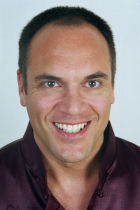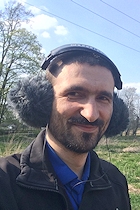How to sing overtones (tutorial)
Ajoutée le 6 oct. 2015
Ajoutée le 23 déc. 2015
Publié le 3 mars 2006 par stephen0711
La liste des cours en ligne (en format PDF) est disponible à l’adresse suivante :
http://www.paris4.sorbonne.fr/e-cursus/texte/CEC/Gleothaud/leothaud.htm
5.1. Mains
5.2. Dispositif matériel extérieur au corps
5.2.1. Masque
5.2.2. Altérateur de voix
5.2.2.1. Récipient, contenant
5.2.2.2. Porte-voix
5.2.2.3. Casque
5.2.3. Système excitateur (système producteur de son : exemple : voix + flûte)
5.2.4. Mirliton : faire vibrer une membrane au moyen d’une onde sonore déjà existante
5.2.5. Microphone
5.3. Emission dans un milieu autre que l’aire
5.4. Choix spécifique d’un lieu à l’acoustique spéciale
5.4.1. Lieu très réverbérant
5.4.2. Lieu très assourdissant (voix de statues, voix en terre)
Cette technique suit la route de la soie (entre la Chine et l’Occident). La Bachkirie (ancienne république socialiste autonome de Russie), devenue aujourd’hui le Bachkortostan (à l’ouest de l’Oural, à côté du Turkestan, à la frontière de la Sibérie). On utilise dans ce pays une technique de chant dans la flûte très élaborée. Flûte Kurai : tige d’angélique séchée jouée de façon oblique avec la langue enroulée, la mains droite tenant la flûte en supination, la main gauche réalisant le jeu. Utilisation de deux techniques : accompagnant réciproque voix/flûte : inversement de perspective sonore (chant diphonique, bourdon). Chacune des perspectives est utilisée à des fins esthétiques, techniques organisées au sein d’une strophe. Cette technique se trouve aussi ailleurs : Mélanésie, Afrique, très peu en Europe.
Son primaire + son vocal + surmodulation
Le mirliton est un surmodulateur : action sur un son qui existe déjà. Dispositif présent :
è système universellement utilisé, organologiquement classé dans les membranophones soufflés.
La membrane possède plusieurs origines :
En occident : jeu d’enfant, kazoo, instrument profane. Chez les Baoulés de Côte d’Ivoire : connotation très très forte. Os de toucan + enveloppe de cocon d’araignée. Les voix groupées par deux sont jouées en tierces parallèles. La tierce est caractéristique des Baoulés (¹ chant en quartes parallèles des Guéré). Le rituel Baoulé consiste en un dialogue de deux esprits protecteurs. Représentation symbolique des esprits (épidémie, empoisonnement, adultère) : Pondo Kaku (mirliton), Gooli (tambour à friction).
Alternance tellement rapide qu’elle est perçue comme voix unitaire. è technique du hoquet voco-instrumental.
Hoquet simple ou monodique. Réalisé par un seul individu : pygmées de la forêt équatoriale M’Benzele. Dispositif : simple rameau de 7 à 8 cm de long, creux, ouvert aux deux bouts, utilisé comme un sifflet (hindewou), qui alterne avec la voix (voix de fausset). Aussi chez les pygmées Aka avec le sifflet Mobeke
Publié dans ETHNOMUSICOLOGIE
Année universitaire 2004-2005
Emmanuelle Trinquesse | 11 novembre 2015 | Gilles Léothaud, Théorie de la phonation
J’ai eu la chance il y a une grosse dizaine d’années, lorsque je faisais mes études de musicologie et mon Master sur le Belting à la Sorbonne, d’avoir comme professeur Gilles Léothaud. Ses cours étaient tout simplement passionnants et il a confirmé mon envie de m’intéresser beaucoup, beaucoup, beaucoup à la voix !
Avec générosité il avait à l’époque mis en ligne son cours intitulé « théorie de la phonation ». Je vous propose donc de le consulter ici :
Théorie de la phonation par Gilles Léothaud
Je vous souhaite une agréable lecture !

GILLES LEOTHAUD & TRAN QUANG HAI
SOMMAIRESOMMAIRE………………………………………………………………………………………………2Introduction………………………………………………………………………………………………..6ChapitreI…………………………………………………………………………………………………10Anatomie du système phonatoire………………………………………………………………….101.L’appareil vocal………………………………………………………………………………….102.Le larynx…………………………………………………………………………………………..122.1.Les cartilages du larynx…………………………………………………………………122.2.Les muscles du larynx……………………………………………………………………122.2.1. Muscles intrinsèques……………………………………………………………….132.2.2. Muscles extrinsèques……………………………………………………………….142.3.Membranes et ligaments du larynx…………………………………………………..152.4.Situation du larynx………………………………………………………………………..152.5.Action des muscles du larynx………………………………………………………….162.5.1. Action des crico-thyroïdiens……………………………………………………..162.5.2. Action des thyro-aryténoïdiens………………………………………………….172.5.3. Les configurations glottiques…………………………………………………….183.Le corps sonore………………………………………………………………………………….193.1.Le pharynx et la cavité nasale…………………………………………………………203.2.Les cavités buccales et labiales……………………………………………………….204.Le système articulateur………………………………………………………………………..20ChapitreII………………………………………………………………………………………………..22La respiration……………………………………………………………………………………………221.Les différents volumes respiratoires……………………………………………………….222.La mécanique respiratoire…………………………………………………………………….232.1.L’inspiration………………………………………………………………………………..232.2.L’expiration…………………………………………………………………………………242.3.La respiration phonatoire……………………………………………………………….253.Les muscles de la respiration………………………………………………………………..253.1.Muscles de l’inspiration…………………………………………………………………253.2.Muscles de l’expiration………………………………………………………………….264.Typologie de la respiration…………………………………………………………………..274.1.Le type thoracique supérieur…………………………………………………………..284.2.Le type thoracique inférieur……………………………………………………………284.3.Le type abdominal………………………………………………………………………..284.4.Le type vertébral…………………………………………………………………………..28ChapitreIII……………………………………………………………………………………………….29Physiologie de la phonation…………………………………………………………………………291.Survol historique………………………………………………………………………………..291.1.Époque ancienne…………………………………………………………………………..291.2.Époque moderne…………………………………………………………………………..291.3.Les moyens d’investigation…………………………………………………………….302.Les théories de la phonation………………………………………………………………….33
LE COURS COMPLET EST SUR LE LIEN CI DESSOUS :
https://www.chantvoixetcorps.com/tags/gilles-leothaud/


Mark van Tongeren is a sound explorer and ethnomusicologist who has worked independantly for theatre, radio, clubs, universities and conservatories as a performer, music teacher, dj and researcher.
He feels equally at home ‘in the field’ to study and practice indigenous vocal techniques, as in cutting-edge experimentation in sound and vision, using his voice and a wide array of instruments small and large.
He divides his time equally between the performing arts and music research. He specializes in the performing arts of Turco-Mongol peoples and extended uses of the voice. He is well-known as an author, singer, teacher and speaker in the ancient Turco-Mongolian art of throat singing (or khöömei) and its contemporary, western variant called overtone singing.
He founded his own enterprise Fusica in 1998. In 1999 he co-founded the North Asia Institute Tengri, which is dedicated to the study, dissemination and exchange of the cultural traditions of this little-known part of Asia.
Mark gives workshops, concerts and private lessons in overtone- and throatsinging and other extended vocal techniques upon request.
Email: mark@fusica.nl


Anna Maria Hefele is one of the best female overtone singers in the Western world .She started learning the throat singing in 2005.
TRAN QUANG HAI was in Salzburg to participate in the international symposium “BRAIN & VOICE” . He met Anna Maria HEFELE , the refined overtone singer. Salzburg, Germany, August 26th 2016
TRẦN QUANG HẢI gặp nữ nhạc sĩ kiêm ca sĩ chuyên về hát đồng song thanh tại hội thảo quốc tế “ÓC và GIỌNG”. Salzburg, Áo quốc, 26 tháng 8, 2016
Here you can buy licenses for Overtone Analyzer and VoceVista Video.
Our products come in several editions. Please note that the Overtone Analyzer edition does not contain Frequency Filters. Some tutorial videos still show filters in Overtone Analyzer, but the editions have been renamed in May 2017 due to the merging of Overtone Analyzer and VoceVista. For Frequency Filters, please get VoceVista Video or VoceVista Video Pro. You can compare the different editions on our Products page.
We recommend that you download and install the software before buying it to ensure that it runs well on your system, and that you selected the feature set you want.
| Edition | Single-User License | ||
|---|---|---|---|
| Overtone Analyzer for Mac | 49 € | ||
| VoceVista Video for Mac | 99 € | ||
| VoceVista Video Pro for Mac | 399 € | ||
| Overtone Analyzer for PC | 49 € | ||
| VoceVista Video for PC | 99 € | ||
| VoceVista Video Pro for PC | 399 € |
By purchasing or downloading our software products, you agree to abide by our license terms. All orders are processed by FastSpring through a secure website. When making an order, the personal data required for payment processing is transmitted to FastSpring. Please note FastSpring’s privacy policy and ours.
Registered users get free updates for 12 months from the date of purchase. This is for all new versions of the purchased edition of the software that are released during that time.
After 12 months, you can continue to use the software indefinitely, but you won’t be able to install new updates. To upgrade to the latest version (and to get another 12 months of upgrades), you can buy a renewal license for 25% of the current price of a new license. If you have not upgraded for four years or longer, the price of the renewal license is 50% of the current price of a new license. Please write to us at info@sygyt.com if you want to upgrade.
If you have a license for Overtone Analyzer Live or Overtone Analyzer Premium, you can buy a renewal license to upgrade to Version 5.x. Overtone Analyzer Live 4 will be upgraded to VoceVista Video 5, and Overtone Analyzer Premium 4 will be upgraded to VoceVista Video Pro 5. As part of this upgrade you can choose to switch to the Mac version.
If you have bought a smaller edition and need the features of a higher edition, you can upgrade to the higher edition by paying the difference between the editions. Please write to us at info@sygyt.com for more details.
Students get a 50% discount upon request. If you are a student at a school or university, please write to us at info@sygyt.com to get the student discount. Please state the name of your school and your subject.
If your organization requires a W-9 form prior to purchasing a license, please note that our orders are handled by a company called FastSpring, and that they are the vendor from which you need the taxpayer identification number. Here is the relevant W-9 form from them.
 We offer multi-user licenses for VoceVista Video Pro. These are intended for educational institutions and academic departments.
We offer multi-user licenses for VoceVista Video Pro. These are intended for educational institutions and academic departments.
| Seats | Initial Price | Renewal License | |
|---|---|---|---|
| 5 | 1499 € | 374 € | |
| 20 | 1999 € | 499 € | |
| 30 | 2499 € | 624 € | |
| 50 | 3499 € | 874 € | |
| 100 | 5999 € | 1499 € |
Any questions? Feel free to ask us at info@sygyt.com. Also, please take a look at our Frequently Asked Questions.
Sygyt Software was founded in 2003 by Bodo Maass and Wolfgang Saus to explore the creation of tools that help people to become better musicians and to realize the full potential of their voice. “Sygyt” is the tuvan word for a specific throat singing technique that creates a very strong, high pitched overtone sound. The name represents the company’s origin in overtone singing.
 Bodo Maass is the founder and main software developer of Sygyt Software. He first began programming at the age of 11. After studying Cognitive Science (Psychology and Philosophy) at the University of Oxford, he worked on voice based human-machine interfaces for a company called MicroStrategy in Washington D.C. He subsequently returned to Oxford to become the first employee of the newly founded company NaturalMotion, where he was the lead developer for NaturalMotion’s award winning 3D animation software “endorphin”, a commercial product to synthesize human movement based on artificial intelligence research. He discovered Overtone Singing in 1994 and immediately wanted to learn this seemingly impossible art of singing two melodies at the same time. He and his teacher in this method, Wolfgang Saus, talked about the lack of good software to assist teaching overtone singers, and thus “Overtone Analyzer” was born.
Bodo Maass is the founder and main software developer of Sygyt Software. He first began programming at the age of 11. After studying Cognitive Science (Psychology and Philosophy) at the University of Oxford, he worked on voice based human-machine interfaces for a company called MicroStrategy in Washington D.C. He subsequently returned to Oxford to become the first employee of the newly founded company NaturalMotion, where he was the lead developer for NaturalMotion’s award winning 3D animation software “endorphin”, a commercial product to synthesize human movement based on artificial intelligence research. He discovered Overtone Singing in 1994 and immediately wanted to learn this seemingly impossible art of singing two melodies at the same time. He and his teacher in this method, Wolfgang Saus, talked about the lack of good software to assist teaching overtone singers, and thus “Overtone Analyzer” was born.
This work was later expanded to create the next generation of the software “VoceVista” together with the voice scientist Don Miller.

Originally trained in Germany as a scientist as well as a classical singer, Wolfgang Saus has gained a profound understanding of overtone singing, both as a performer and a teacher. His unique combination of a scientific intellect and several decades experience as a singer enables him to make overtones accessible to many people by explaining them in simple, intuitive terms. Saus has become one of the leading overtone singers in Europe, and has taught hundreds of students individually and through workshops. He is also an expert in improving the intonation of a choir by training the singers to control their overtones, which he has refined into his new method of “Choral Phonetics”.
Overtone Analyzer and VoceVista Video are the consequent application of his knowledge to the medium of software, which allows the visualization and exploration of voice and sound in an interactive way.

Operatic bass-baritone Donald Miller was professor at the Syracuse Unversity School of Music when, in the 1980s, he began research on the acoustics and physiology of the singing voice with phoniatrist Harm Schutte in Groningen, The Netherlands. Later in that decade he settled in Groningen full time, where he and Prof. Schutte published a number of articles, earning him a PhD with the publication of Registers in Singing in the year 2000. A product of that research has been the software program VoceVista, providing digital feedback for singing instruction from spectrum analysis and the electroglottograph (EGG). In 2008 he published Resonance in Singing, concisely describing the application of the system to analysis of the recorded literature, as well as to live instruction in the voice studio.

Krzysztof Jaros, born in Poland, is author, software developer, independent researcher, lecturer. Mainly, his work is focused on soundwork and consciousness exploration. His research touches singing bowls, overtone singing, brainwave entrainment, and spectral signal processing. Over the years, he created several audio technologies, software solutions, methods and verbal programs – designed to support therapies, self-improvement and adventures in the world of altered states of awareness. He worked for Peter Hess Academy in Poland, and inspired by works of Robert A. Monroe, he gives workshops on ways of dealing with expanded perception of inner and outer reality. A few years ago he fell in love with Overtone Analyzer, and now is helping to push it beyond the imaginable.
Ajoutée le 24 févr. 2015